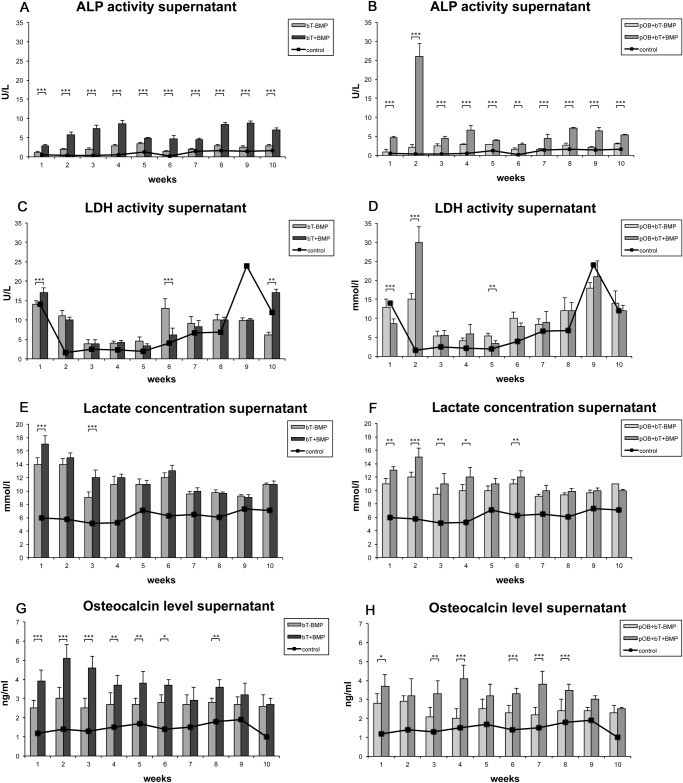Figure 1. Diagram showing the effects of recombinant BMP-7 on alkaline phosphatase (ALP), lactate dehydrogenase (LDH), lactate and osteocalcin (OCN) (supernatant), combining the following four distinct groups: monoculture of bovine tendon specimens without BMP stimulation (bT-BMP); monoculture of bovine tendon specimens treated with 400 ng/ml BMP-7 (bT+BMP); coculture of bovine tendon specimens and pOBs without BMP stimulation (pOB+bT-BMP); and coculture of bovine tendon specimens and pOBs treated with 400 ng/ml BMP-7 (pOB+bT+BMP).
Monoculture of pOBs without BMP stimulation served as a control (horizontal line).(A) Application of BMP-7 increased the levels of ALP activity, compared to those in the non-stimulated group. (B) A maximum peak of ALP activity was found in the BMP-7-stimulated cocultures of bovine tendons and pOBs after 14 days. (C) The group-specific LDH activity is shown. (D) Parallel to the findings regarding ALP activity, the highest levels of LDH activity were found in the coculture of tendons and pOBs at two weeks. (E) A moderate increase in lactate was observed during the early phase following BMP-7 stimulation of the monocultures, whereas no significant effects of BMP-7 were found during the later stages. (F) The BMP-7-stimulated coculture showed a significant increase during the early phase. In contrast to the results of ALP and LDH activity, a time-dependent decrease in the lactate concentration was found in all the groups. (G) BMP-7 application showed a significant increase in OCN expression in the tendon monoculture during an early phase of the experiment (week 2). (H) The stimulated cocultures peaked at a later stage (week 4). The data are presented as mean ± standard deviation. The asterisks (*) indicate the significant differences between the stimulated and non-stimulated groups (*p<0.05, **p<0.01, ***p<0.001).

